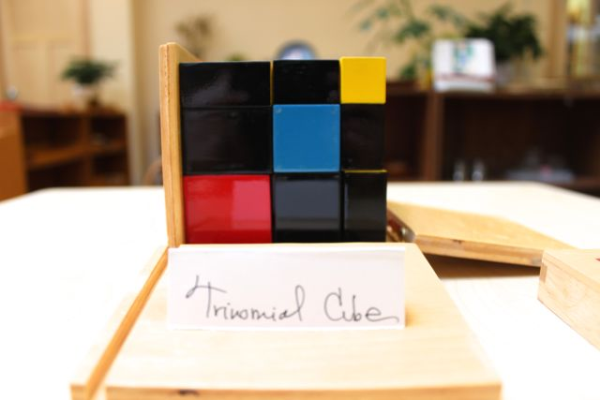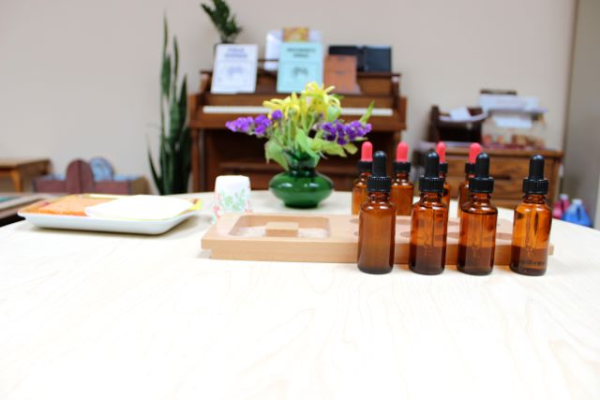Wisconsin Montessori Sensorial Skills
In traditional schools, children are taught by words;
In Montessori schools, children learn by experience.
“Our five senses connect the inner life of humans with the physical outside world.”
-- Dr. Maria Montessori
 At birth, and even in utero, an infant’s first awareness of the world comes to him through his senses – seeing bright lights, feeling warm or cold, soft or hard, hearing various sounds of voices or music, tasting his mother’s milk, smelling his mother’s body, etc.
At birth, and even in utero, an infant’s first awareness of the world comes to him through his senses – seeing bright lights, feeling warm or cold, soft or hard, hearing various sounds of voices or music, tasting his mother’s milk, smelling his mother’s body, etc.
Young children, guided by an inner sensitivity, are very interested in objects – in the names of them, but especially in the qualities of the objects such as: the roughness, smoothness, weight, hardness, softness, color, texture, size, shape, etc.
Aristotle was the first to recognize and analyze the human ability to abstract. He said, “There is nothing in the intellect, which was not first in the senses.”
Imagine a young child and his Guide seated at a table and discussing just the idea of cubes, spheres, and cones. How successful is the child in his understanding of these objects? What if the Guide shows him pictures of these objects?
 Now imagine that same Guide bringing to the child a blue cube, a blue sphere, and a blue cone and they take turns handling each object with their eyes closed. The child would now have an experience - shape, weight, smoothness, roundness, corners, points, flatness - with the real objects.
Now imagine that same Guide bringing to the child a blue cube, a blue sphere, and a blue cone and they take turns handling each object with their eyes closed. The child would now have an experience - shape, weight, smoothness, roundness, corners, points, flatness - with the real objects.
Later, the Guide points to the blue cube, and says to the child, “Can you find another cube somewhere in the classroom?” The child eagerly looks everywhere and maybe he finds it, or maybe another child points it out, a cube from the pink tower or a box – and the child brings it back and lays it next to the blue cube. He finds a globe, a planet, a marble, a ball in the bird’s cage, etc. for the sphere. He brings the funnel for the cone. Excitedly, he matches the shapes with objects from the environment.
The Guide is not finished (my favorite part), she now takes the child and the blue shapes outside – “Can you find a cone? A cylinder? A rectangular prism? A triangular prism?”
Bewildered at first, the child looks all around him – then he sees the pine tree (cone), the roofs of the houses (rectangular and triangular prisms), the tree trunks, the bell tower, the sun, the flowers, stones, walls, windows, EVERYTHING!
Wisconsin Montessori Sensorial Skills – Refine Your Child’s Senses
The sensorial materials are not meant to present to the child new impressions, but to help the child refine his senses; to give order to the many impressions he is constantly receiving so that he can classify or categorize these impressions; to develop keener powers of observation and perception; to make the child be more aware of specific characteristics in the environment; to form a foundation for intelligent exploration of the environment; to help the child with his reasoning; to appreciate beauty; to assist him in making abstractions; and especially, to spark a great love of learning.
For these reasons, Dr. Montessori called the sensorial materials for the child
“The Keys to the Environment.”
